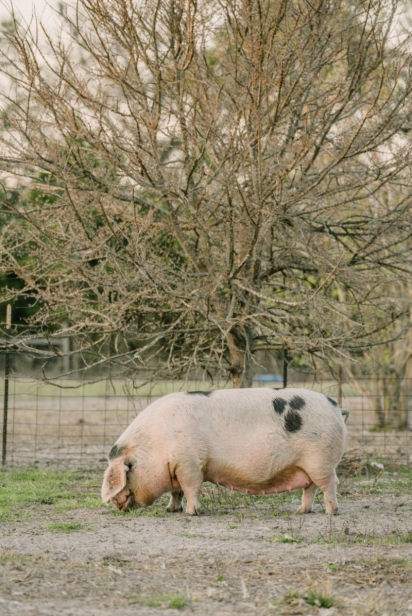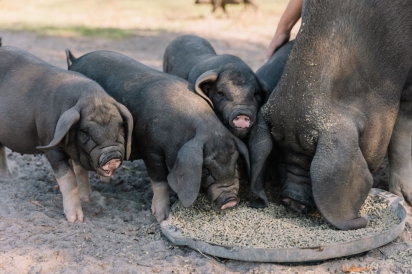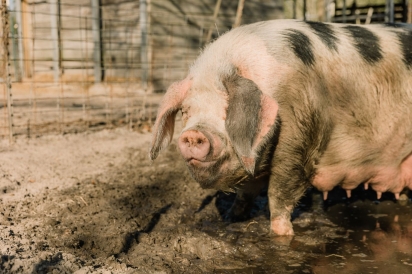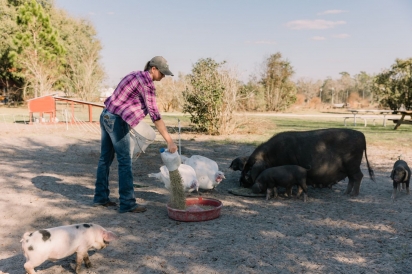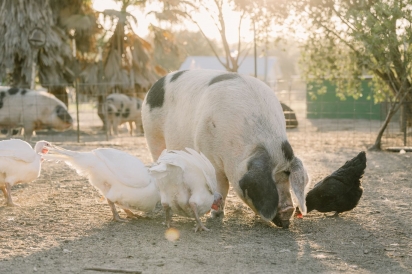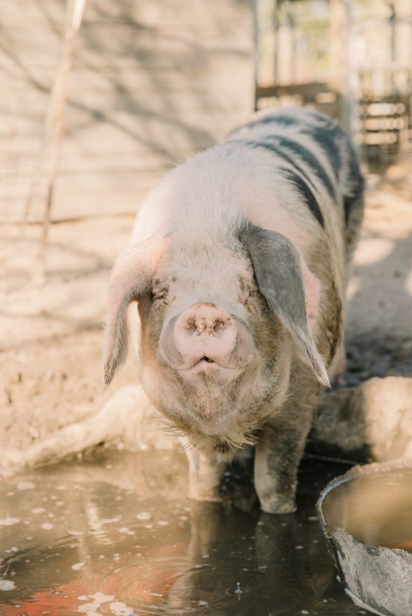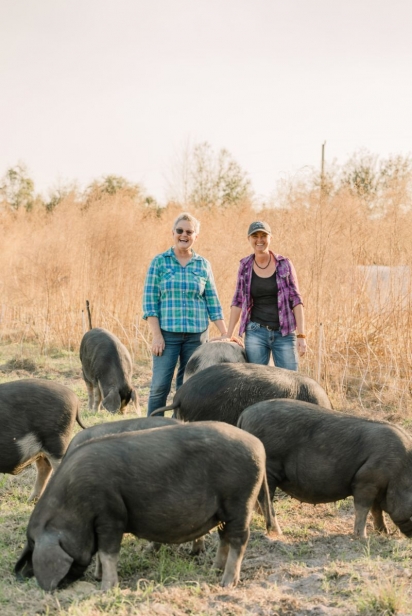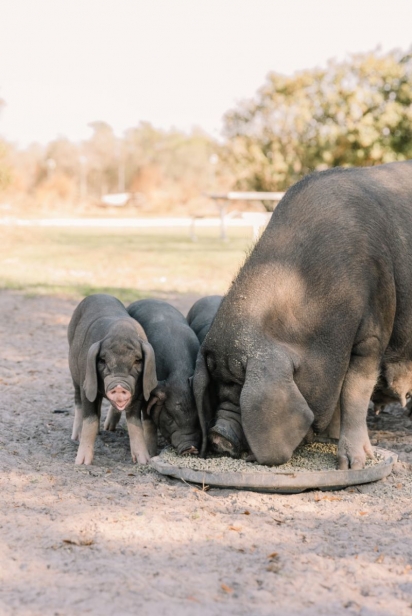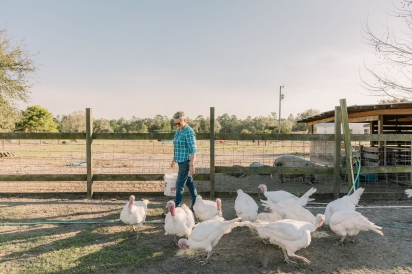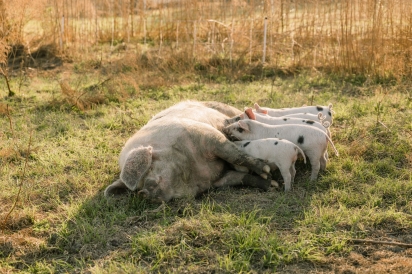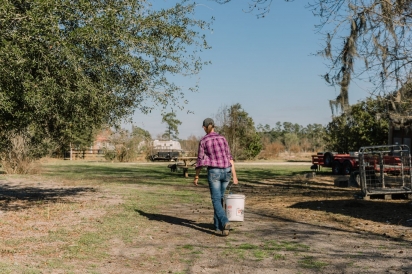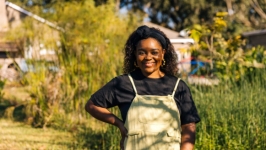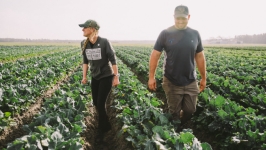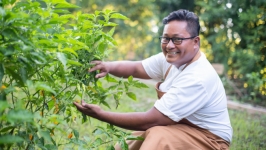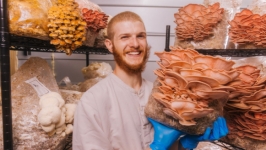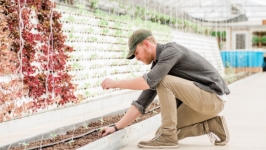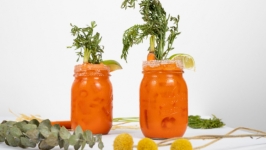Rare Breeds: Preserving Heritage Pigs
There’s no hiding how the sausage is made at The Swinerie, an artisanal charcuterie shop that opened in the San Marco neighborhood in 2022. Nor is there any desire to. A window opens into the kitchen where sausage is stuffed and whole cuts of marbled muscle are prepared to hang in dry, refrigerated curing chambers for all to see. Finished meats fill the deli case, ready to be sliced to order, a sharp contrast to their pre-packaged grocery store counterparts. The names on their tags all but roll off the tongue – coppa, cecina, lomo, bresaola – evoking dimly lit cafes lining cobblestoned Old-World alleys, Mediterranean Sea breezes and swirling glasses of red wine.
In whole muscle charcuterie, the only real ingredients are salt, time and the meat itself. “You can’t just cover up the flavor with rosemary,” says The Swinerie co-owner Alfred Young. “You can’t hide it at all. It’s the quality of the meat that shines through and gives it its flavor.” That means conventional, industrially processed pork is simply out of the question. Only high-quality heritage pork will do at both The Swinerie and its adjacent restaurant Bar Molino
Most of the meat you’ll find at the grocery store comes from pigs who spend their entire lives on concrete, never grazing on real grass or basking in the sun. They are confined in close quarters, fed copious amounts of antibiotics to prevent the inevitable spreading of disease and generally not humanely cared for. “That meat is pale and flavorless,” Young says.
For The Swinerie, quality pork means locally-raised heritage hogs like the ones raised by Kimberly Ruessler of Lola Farms in Lake Butler, Florida. Young and his team chose to source their pork from Lola Farms after visiting the farm and observing Ruessler’s hog-raising philosophy in action. “She cares deeply about the entire process,” says Young.Ruessler is indeed passionate about raising heritage hogs and you need only listen to her sing the praises of her prized pigs to know the truth of it. She speaks of them as individuals with distinct personalities. “Some are more chill and laid back than others. Some will talk to you more,” she says. “They can be silly, fussy or grumpy, just like any animal you have the opportunity to have in your life.”
Ruessler takes great care to ensure her pigs are well tended and appreciated. “We encourage natural behaviors with our hogs, allowing them to graze, root and wallow as pigs should be allowed to do,” says Ruessler. They also receive a lot of attention and interaction. Happy pigs make for better pork, so belly rubs are an essential part of their daily routine.
Lola Farms primarily raises two breeds of heritage pigs, Gloucestershire Old Spot and Meishan, both rare and threatened breeds that are slowly making a comeback in terms of their numbers. Old Spot hogs have a familiar-enough appearance with their distinctive white skin and namesake black spots. Favored by the royal family in England in the 19th century, their popularity peaked after World War I. By the 1990s, however, the breed faced near extinction despite attempts to popularize them in the United States. Their numbers have risen slowly but significantly in recent years thanks to the efforts of farmers like Ruessler, and the breed has transitioned from being critically endangered to the slightly less ominous status of threatened according to the Livestock Conservancy.
Meishans, on the other hand, are one of the oldest extant breeds of domesticated pigs on the planet. Originating in ancient China, they have been selectively bred for over 5,000 years, and are rumored to have once been exclusively reserved for none other than the emperor himself. Brought to the United States only in 1989, their status remains critical, but a number of breeders concentrated in the Southeastern states of South Carolina, Georgia and Florida are working to restore their numbers. Meishan meat differs significantly from conventional pork. Young describes its color as ruby red with a decidedly steak-like flavor and texture.
Quality such as this comes at a cost and requires an ecosystem of its own to sustain it. “What farmers like Kimberly are doing to revive the breeds is creating an economy for it,” says Young. “These pigs are more expensive to raise and they don’t get as big,” he adds.
It may seem counterintuitive, perhaps even ironically cruel, to slaughter an animal to save it, but the fact is that without said economy, these breeds would almost certainly cease to exist. “You can’t preserve a breed if you don’t use it for its purpose,” Ruessler says. “And these breeds are too precious and too amazing to just let them go.” This utilitarian outlook doesn’t make it any easier for Ruessler to part with her prized porcine companions, though. “It’s the hardest part of my job,” she admits when it comes time to bring the pigs in for processing. “We have the utmost appreciation for what these animals do for us,” she says. “We don’t take life and death lightly around here and we never will. The day that I don’t feel that pain in my chest is the day I quit.”





